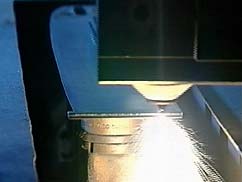 |
 |
 |
| Laser cutting of the base |
 |
   |
|
 |
Solid (solid-blade) bar.
The solid-blade bars or "solid bars" are specifically for the toughest professional requirements. Like all our guide bars, they are made of high-quality chromium-molybdenum steel and are suitable for the most demanding applications on high-end machines.
For the manufacturing of solid bars we use production processes such as laser cutting, laser welding and high-speed grinding. These processes have replaced complex and costly machines based on earlier technologies and now ensure high-quality, good value and rationalized production.
|